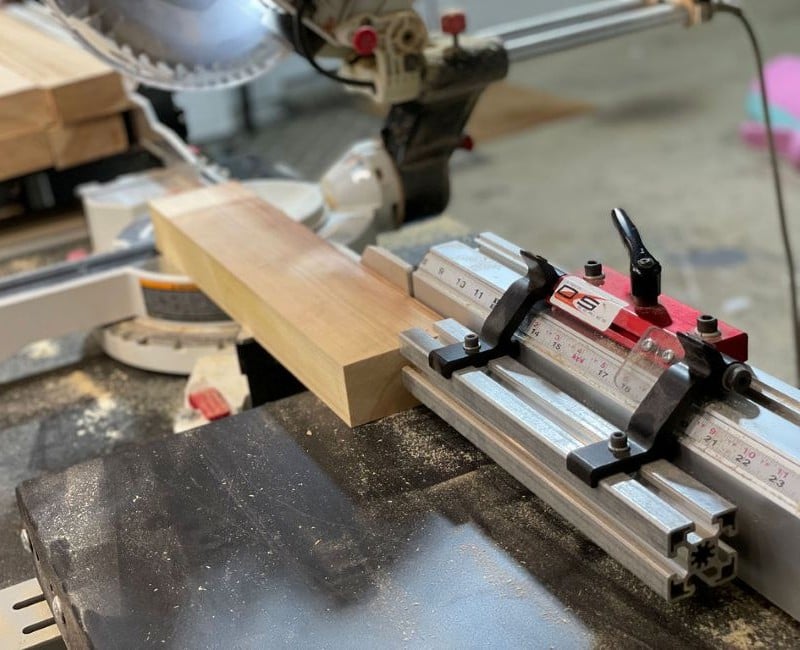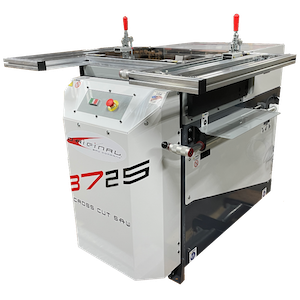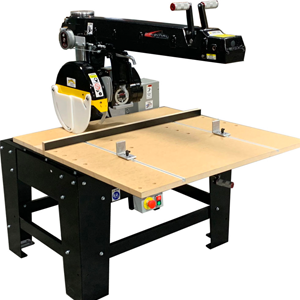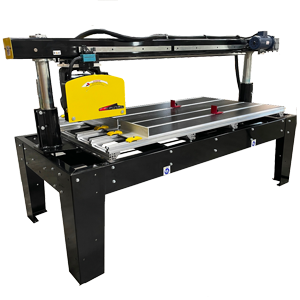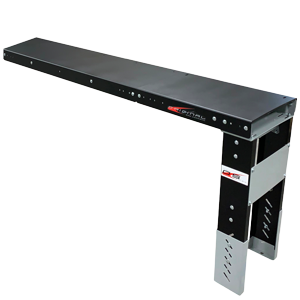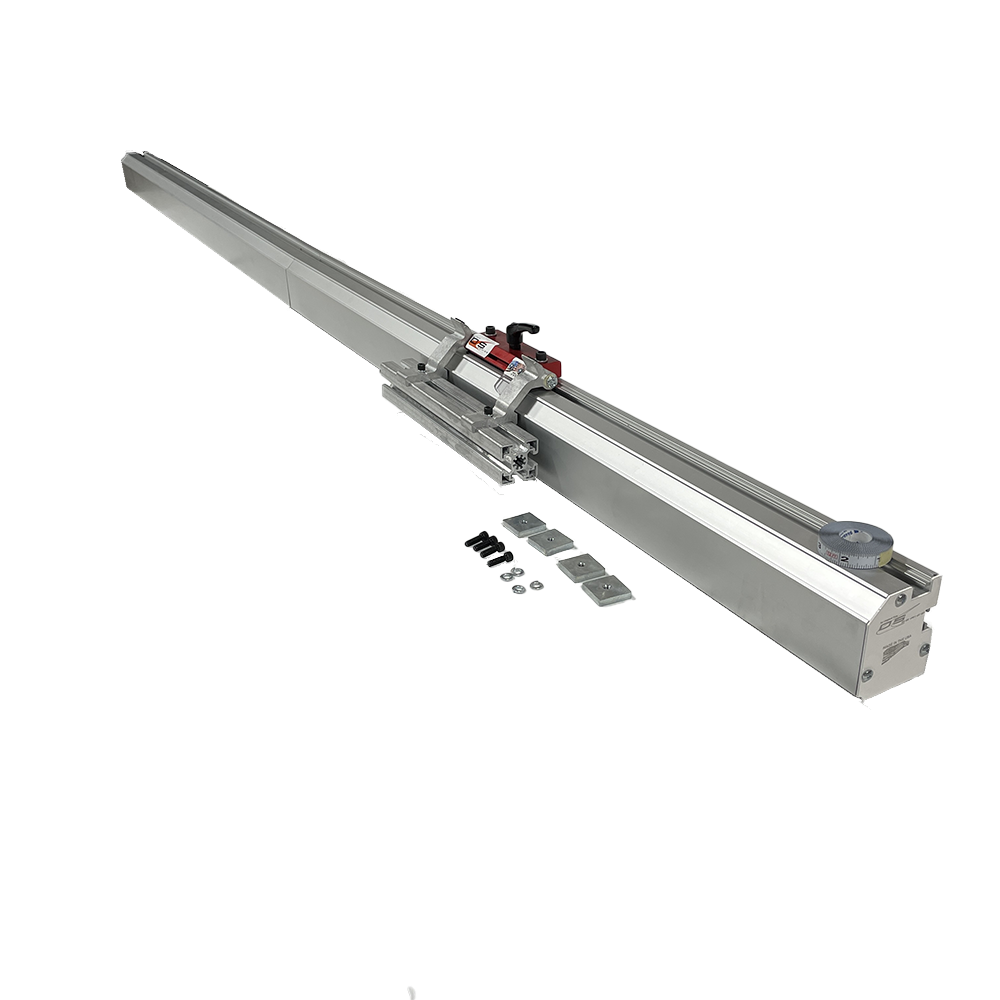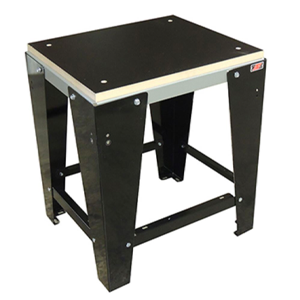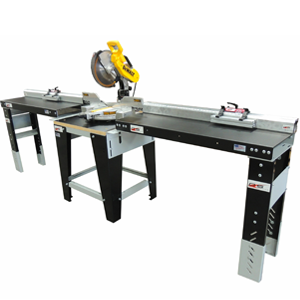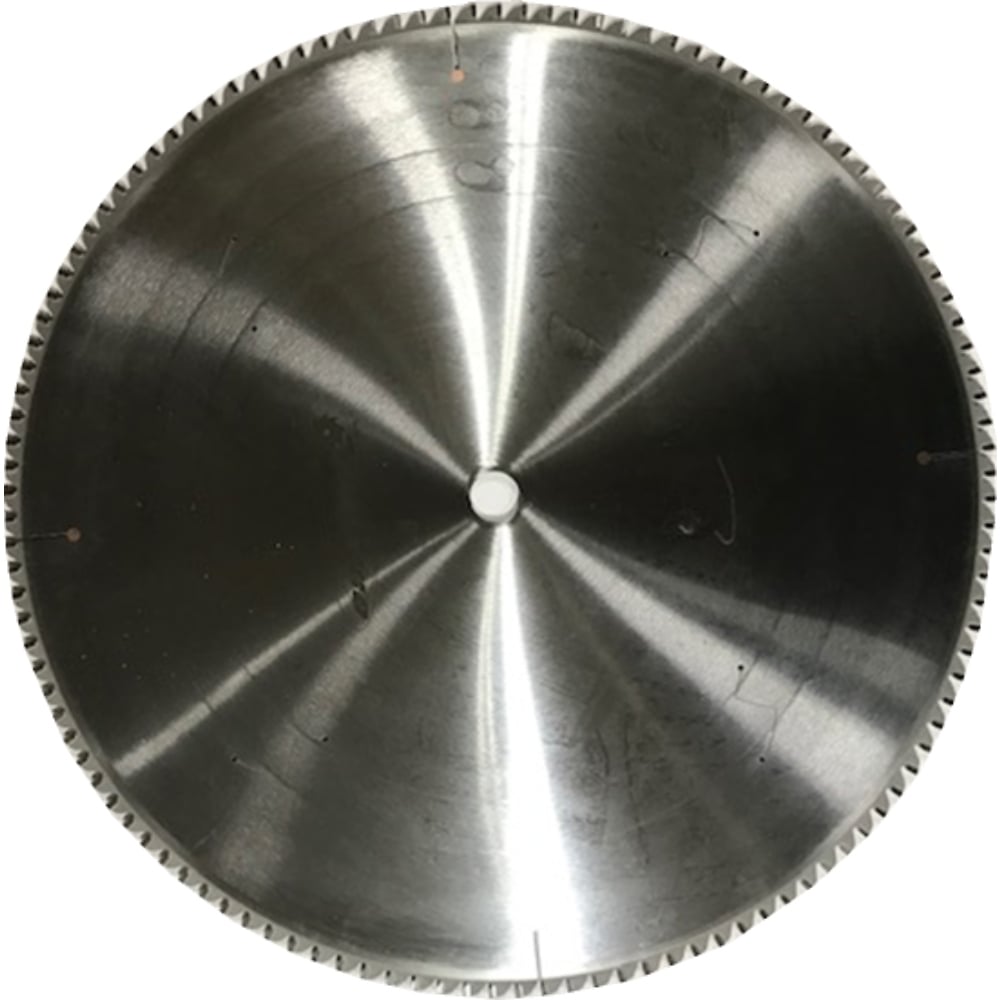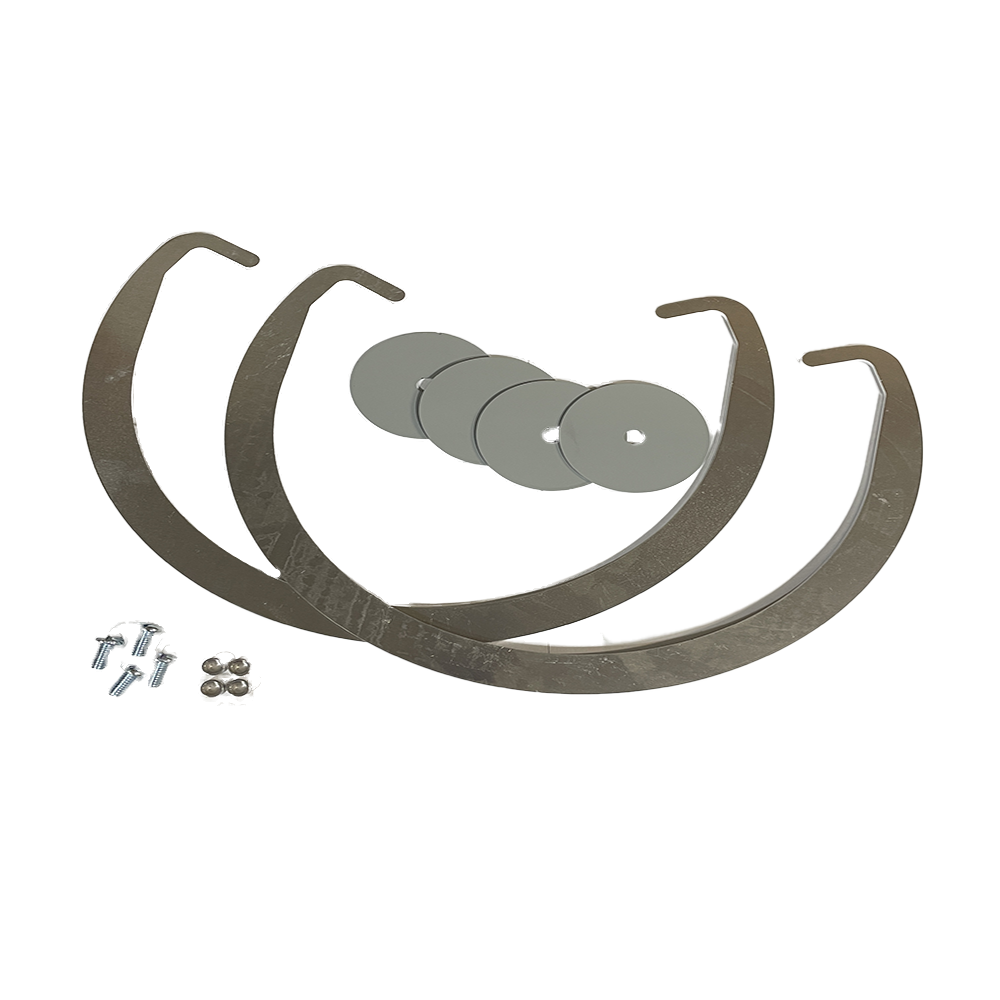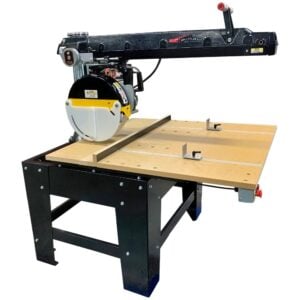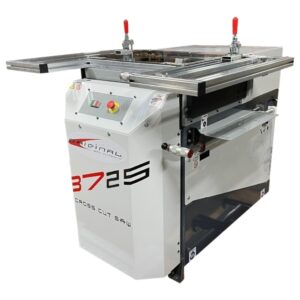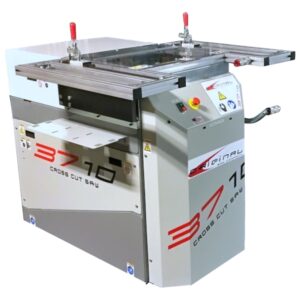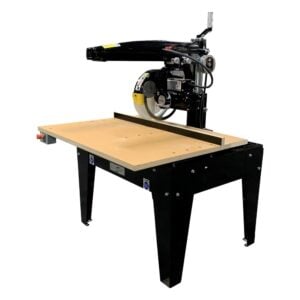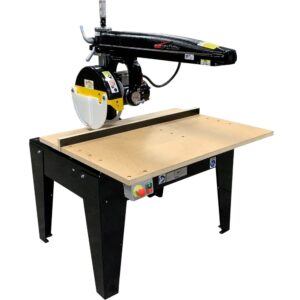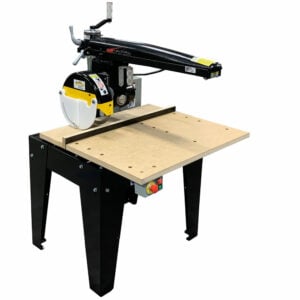The 16″ Super Duty Radial Arm Saw that supports a wide range of industries.
- Manufacturing Facilities: Ideal for repetitive, high-volume cutting tasks for production lines and industrial settings.
- Lumberyards: Perfect for sizing, crosscutting, and preparing wood and wood products for retail or industrial use.
- Prefabricated Housing Manufacturers: Provides precise structural cuts for components like walls, beams, and roof panels for prefabrication processes.
- Truss and Door Plants: Creates customized components, including trusses, door frames, and other structural elements.
- Custom Cabinet Shops: Supports intricate woodworking projects by performing precise miter, bevel, dado, and crosscuts.
- Packaging and Crating Departments: Facilitates the creation of custom crates, pallets, and packaging solutions.
This saw’s ability to perform crosscuts, bevels, miters, dadoes, and rip cuts makes it an essential asset in industries requiring high-performance cutting solutions.
